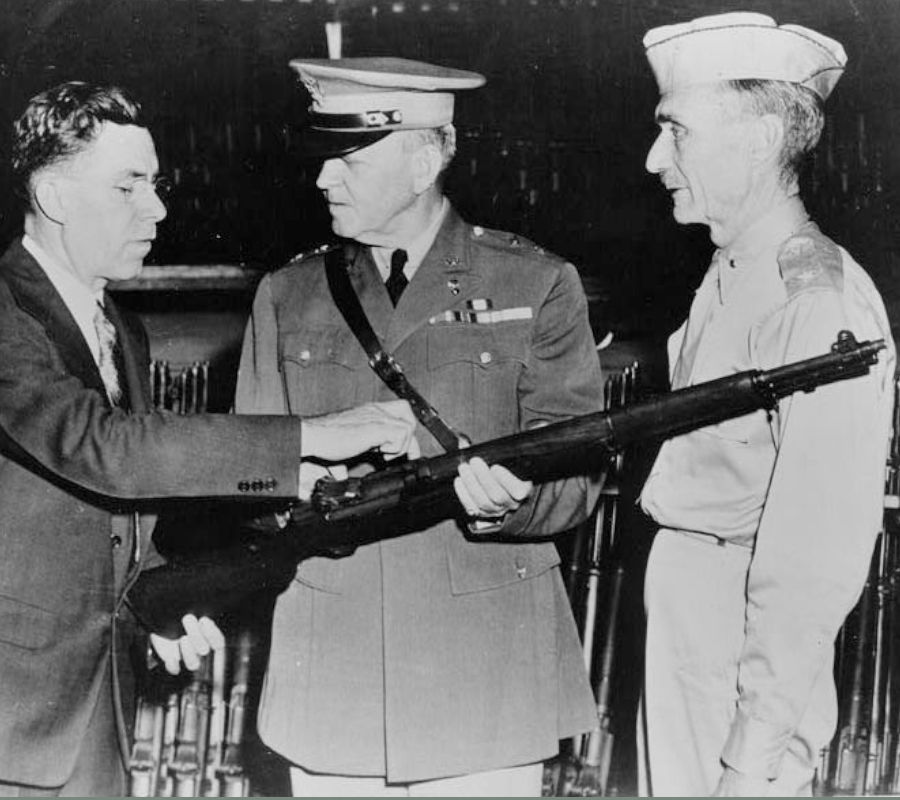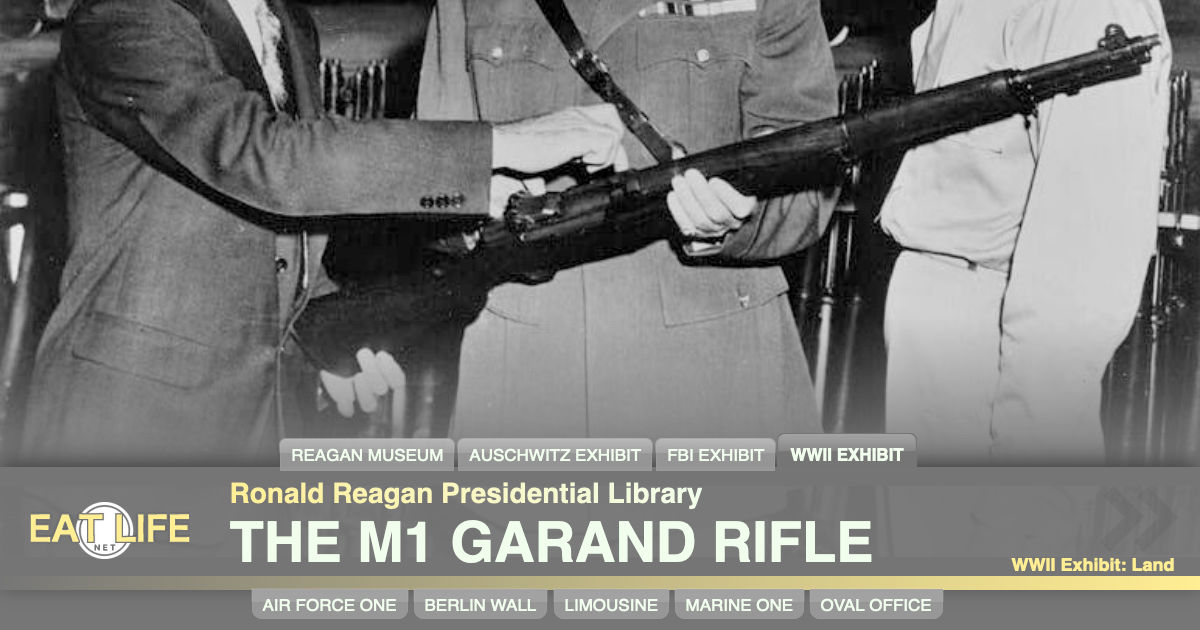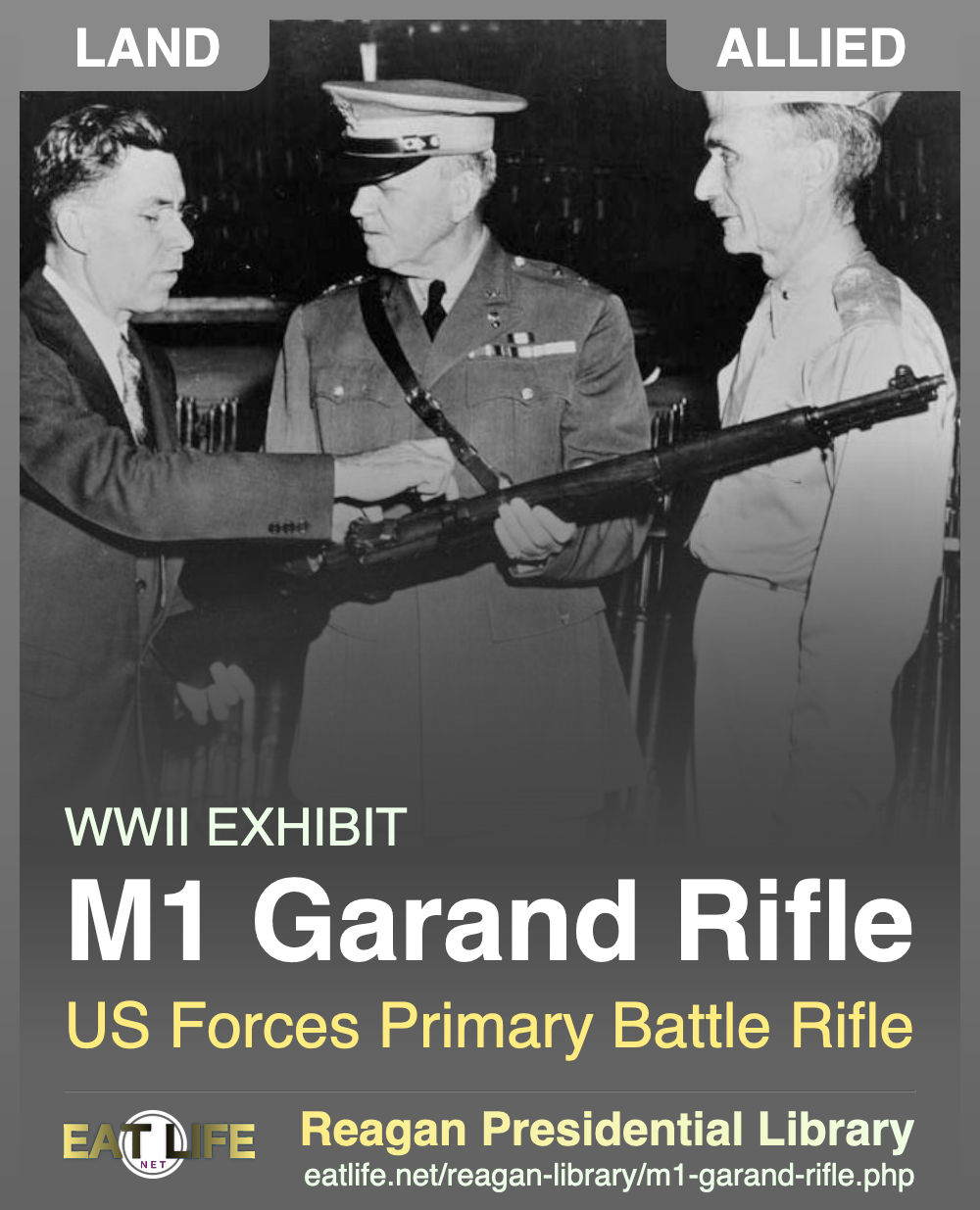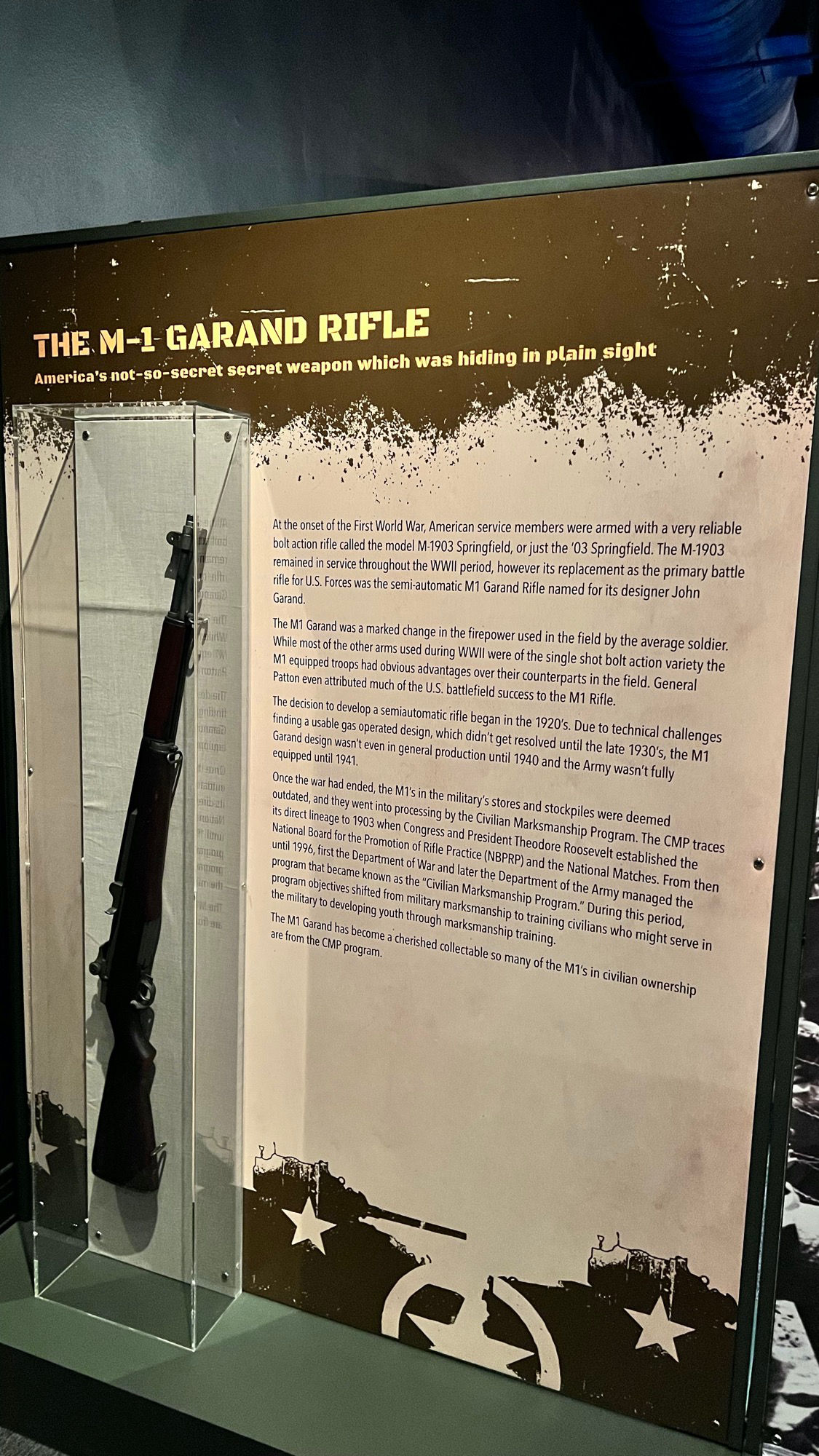
America's not so secret weapon which was hiding in plain sight
At the onset of the First World War, American service members were armed with a very reliable bolt action rifle called the model M-1903 Springfield, or just the '03 Springfield. The M-1903 remained in service throughout the WWIl period, however its replacement as the primary battle rifle for U.S. Forces was the semi-automatic M1 Garand Rifle named for its designer John Garand.
The M1 Garand was a marked change in the firepower used in the field by the average soldier. While most of the other arms used during WWIl were of the single shot bolt action variety the M1 equipped troops had obvious advantages over their counterparts in the field. General Patton even attributed much of the U.S. battlefield success to the M1 Rifle.
The decision to develop a semiautomatic rifle began in the 1920's. Due to technical challenges finding a usable gas operated design, which didn't get resolved until the late 1930's, the M1 Garand design wasn't even in general production until 1940 and the Army wasn't fully equipped until 1941.
Once the war had ended, the MI's in the military's stores and stockpiles were deemed outdated, and they went into processing by the Civilian Marksmanship Program. The CMP traces its direct lineage to 1903 when Congress and President Theodore Roosevelt established the National Board for the Promotion of Rifle Practice (NBPRP) and the National Matches. From then until 1996, first the Department of War and later the Department of the Army managed the program that became known as the "Civilian Marksmanship Program." During this period, program objectives shifted from military marksmanship to training civilians who might serve in the military to developing youth through marksmanship training.
The M1 Garand has become a cherished collectable so many of the M1's in civilian ownership are from the CMP program.
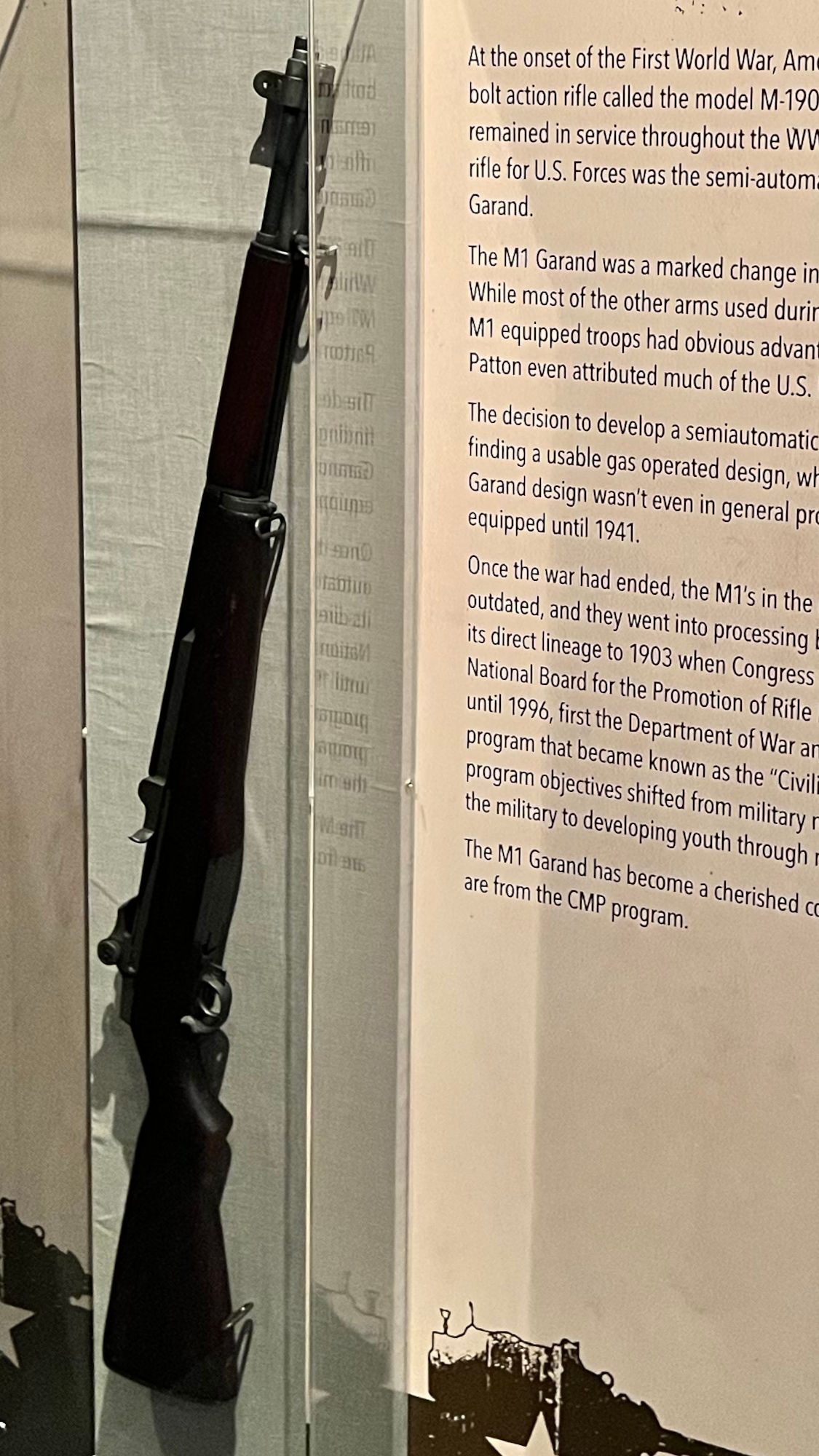
Used at the Battle of the Bulge
- U.S. Carbine M1E5 .30 Caliber
This shortened M1 rifle features a folding stock designed by John Garand. This "carbine" was tested in 1944 and was intended for possible issue to paratroopers.- U.S. Rifle SR M1 Garand .30 Caliber
This "Short Rifle" was designed by John Garand and competed against the Winchester entry which was adopted as the M1 Carbine in 1941.- U.S. Rifle M1 .30 Caliber
This was the first M1 off the Springfield Armory production line to pass the function firing test on 21 July 1937.- U.S. Rifle T1E1 Garand .30 Caliber
Manufactured at Springfield Armory, Springfield, Ma. on July, 31, 1931, this hand made, gas-operated, semi-automatic experimental rifle by John Garand was the prototype .30" caliber rifle that developed into the US M1 Rifle.- U.S. Rifle T20 .30 Caliber
A modified M1 rifle developed by John Garand in 1944-45. The T20 features selective semiautomatic or full automatic fire capabilities and feeds from a detachable twenty round magazine.- U.S. Rifle M1 T26 .30 Caliber
This shortened M1 rifle was field modified by an ordnance unit of the 6th Army in the Philippines for use by paratroopers. It was delivered to Springfield Armory by courier in 1945 for testing and evaluation. This is the rifle erroneously referred to as the "Tanker Garand".- U.S. Rifle M1D .30 Caliber
The M1D was adopted by the U.S. Army as substitute standard in September 1944. John Garand designed the scope mount and barrel block type mounting system. The M1D saw considerable use in Korea and Viet Nam and was used, on a limited basis, by U.S. military snipers in the Persian Gulf War in 1991.- U.S. Rifle M1 T35 (T65E3) with Sanford Integral Magazine .30 Caliber
This modified M1/T35 features a Sanford Integral Magazine which holds ten rounds of .30 cal. T65E3 ammunition. The design was produced and tested in 1953-54 and demonstrates the adaptability of John Garand's design.M1 Accessories by Garand
- Clip loader for the M1 Rifle
John Garand designed this device in 1936. The clip loader makes use of the M1903 rifle five round stripper clips to ease loading of M1 rifle eight round cartridge clips.- M7 Grenade Launcher for the M1 Rifle
Designed by John Garand and adopted by the Army in early 1943. M7 grenade launcher mounted to an M1 rifle and M1 carbine.- M3 Combination Tool for the M1 Rifle
Designed by John Garand in 1937. Included in this one device was a chamber cleaning tool, screw driver, spanner wrench, pin drift, jammed cartridge removal tool and bolt disassembly tool.
WIKIPEDIAThe M1 Garand or M1 Rifle
a semi-automatic rifle that was the service rifle of the U.S. Army during World War II and the Korean War.The rifle is chambered for the .30-06 Springfield cartridge and is named after its Canadian-American designer, John Garand. It was the first standard-issue autoloading rifle for the United States. By most accounts, the M1 rifle performed well. General George S. Patton called it "the greatest battle implement ever devised". The M1 replaced the bolt-action M1903 Springfield as the U.S. service rifle in 1936, and was itself replaced by the selective-fire M14 rifle on March 26, 1958.
The M1 Garand was made in large numbers during World War II; approximately 5.4 million were made. They were used by every branch of the United States military. The typical opponent of a US soldier during World War II was usually armed with a slower-firing bolt-action rifle (e.g. the Karabiner 98k for Germany, the Carcano M1891 for Italy, and the Type 38 or Type 99 Arisaka rifle for Japan). The impact of faster-firing infantry small arms in general soon stimulated both Allied and Axis forces to greatly increase their issue of semi- and fully automatic firearms then in production, as well as to develop new types of infantry firearms.
Features
The M1 rifle is a .30 caliber, gas-operated, eight-shot clip-fed, semi-automatic rifle. It is 43.6 inches (1,107 mm) long and it weighs about 9.5 pounds (4.31 kg).The M1's safety catch is located at the front of the trigger guard. It is engaged when it is pressed rearward into the trigger guard, and disengaged when it is pushed forward and is protruding outside of the trigger guard.
The M1 Garand was designed for simple assembly and disassembly to facilitate field maintenance. It can be field stripped (broken down) without tools in just a few seconds.
The rifle has an iron sight line consisting of rear receiver aperture sight protected by sturdy "ears" calibrated for 100–1,200 yd (91–1,097 m) in 100 yd (91 m) increments. The bullet drop compensation is set by turning the range knob to the appropriate range setting. The bullet drop compensation/range knob can be fine adjusted by setting the rear sight elevation pinion. The elevation pinion can be fine adjusted in approximately one MOA increments. The aperture sight is also able to correct for wind drift operated by turning a windage knob that moves the sight in approximately one MOA increments. The windage lines on the receiver to indicate the windage setting are four MOA apart. The front sighting element consists of a wing guards protected front post.
During World War II the M1 rifle's semiautomatic operation gave United States infantrymen a significant advantage in firepower and shot-to-shot recovery time over enemy infantrymen armed primarily with bolt-action rifles. The semi-automatic operation and reduced recoil allowed soldiers to fire eight rounds as quickly as they could pull the trigger, without having to move their hands on the rifle and therefore disrupt their firing position and point of aim. The Garand's fire rate, in the hands of a trained soldier, averaged 40–50 accurate shots per minute at a range of 300 yards (270 m). "At ranges over 500 yards (460 m), a battlefield target is hard for the average rifleman to hit. Therefore, 500 yards (460 m) is considered the maximum effective range, even though the rifle is accurate at much greater ranges."
